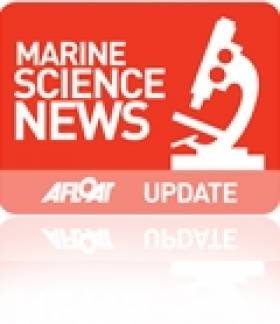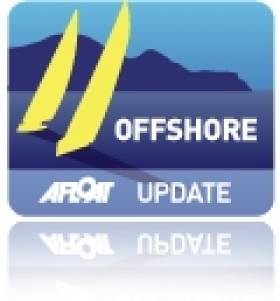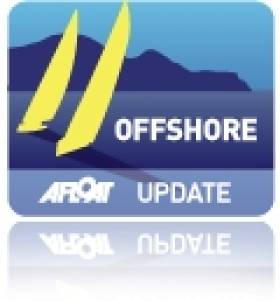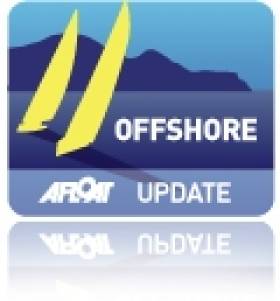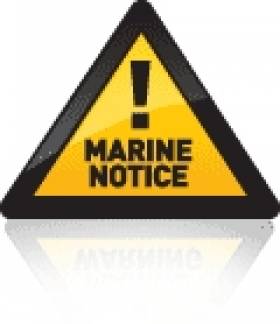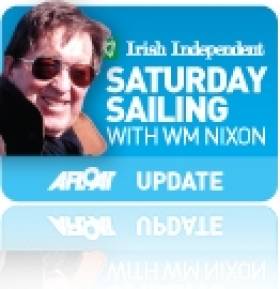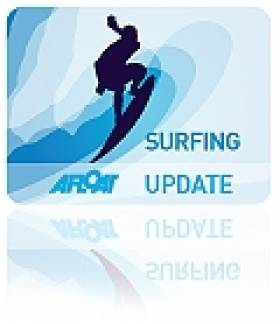Displaying items by tag: Atlantic
Ocean Research Opportunity For Marine Science Graduates
#MarineScience - A unique opportunity to participate in the North South Atlantic Training Transect (NoSoAT) summer school and carry out ocean research in the North and South Atlantic Ocean is being offered to graduates of marine-related sciences from across the island of Ireland.
Applications are invited for up to 10 fully funded scholarships on-board the German research vessel RV Polarstern, which will leave Germany for this summer school in November and transit 14,000km to Cape Town, South Africa.
Along the transect, students will collect samples and data to help to increase our understanding of ocean processes and which will feed into a range of exciting research projects.
The joint mission between the Strategic Marine Alliance for Research & Training (SMART), the Alfred Wegener Institute Helmholtz Centre for Polar and Marine Research (AWI) and the Partnership for Observation of the Global Oceans (POGO) will focus on training talented early-stage scientists in oceanographic research techniques and provide the skills and practical experience needed for a career in marine sciences.
Participants will get hands-on training in deployment and operation of scientific gear, acquisition and processing of the sample material and interpretation of the respective data. Work on board will also include lectures, data workshops, practical exercises and student presentations.
"Although over 70% of our planet is ocean there are lots of areas that are poorly observed and about which we have little knowledge," said Dr Pauhla McGrane, national coordinator of SMART Ireland.
"This collaborative effort with AWI and POGO will increase our understanding of the Atlantic Ocean as well as inspiring the marine scientists of tomorrow to sustainably mange our seas and oceans for future generations."
Prof Karen Wiltshire, vice-president of AWI and chair of POGO, added that "improving our knowledge of the ocean requires a new generation of well-trained researchers that are able to combine practical field work with modern methods like remote sensing or RNA sequencing.
"This pooled infrastructure and expertise provides an incredible chance for postgraduates to get the necessary practical experience and develop networking opportunities they need early in their careers.
"We are all delighted to be leading this strategic collaboration, which will promote mobility for a total number of 34 students from across Europe and Africa and increase multidisciplinary research capacity in Atlantic nations."
Graduates, postgraduates and post-doctoral students of marine-related sciences from across the island of Ireland are eligible to apply via SMART.
The closing date for applications is 7 June 2015. Applicants should make sure that they are available between 29 October and 2 December 2015 to account for pre- and post-cruise events and travel times. For further information on how to apply, visit the SMART website or contact [email protected].
#CheekiRafiki - US Coast Guard officials say they have identified the upturned hull of the Cheeki Rafiki, whose crew have been missing for more than a week.
But according to BBC News, they also confirmed that the vessel's liferaft was still on board - dashing any hopes that its crew of four British sailors may still be alive.
Contact with the 40ft yacht was lost last Friday 16 May after it reported taking on water and altered its transatlantic course while returning to Britain from a regatta in Antigua.
US and Canadian search teams covered a 4,000 square mile section of the mid Atlantic but halted their initial search after two days with no signs of its four-man crew - James Male, Andrew Bridge, Steve Warren and Paul Goslin - who are all experienced offshore sailors.
However, earlier this week the search resumed after a request from the British government amid pressure from the families of the missing yachtsmen and their supporters, who collected hundreds of thousands of signatures in an online petition.
The capsized yacht was found yesterday (Friday 23 May) by the US Navy in the same area where the crew had originally reported difficulties. Search operations have now ended.
BBC News has more on the story HERE.
Search Resumes For Missing British Yachtsmen
#Offshore - The US Coast Guard has resumed the search for four British yachtsmen missing in the mid Atlantic after a request from Westminster, BBC News reports.
Contact was lost last Friday 16 May with Paul Goslin, Steve Warren, James Male and skipper Andrew Bridge of the Cheeky Rafiki a day after the 40ft yacht got into difficulties when returning to the UK from a regatta in Antigua.
Two days later, a major search operation covering 4,000 square miles of the Atlantic was suspended with no sign of the yacht's crew.
It's not been confirmed what specifically prompted the search for the four men to resume - but the move comes a day after an online petition calling on US authorities to restart the search collected more than 200,000 signatures.
The families of the missing sailors maintain their insistence that the men may well have survived the rough ocean conditions in their liferaft, despite the US Coast Guard estimating a survival time of just 20 hours.
Veteran ocean-crossers Sir Richard Branson and Tony Bullimore have also backed the families' belief that the conditions were potentially survivable.
However, experts suggest it "highly unlikely" that rescue teams missed sighting any liferaft during last weekend's search.
A sighting of what's thought to be the upturned hill of the Cheeky Rafiki by the cargo ship Maersk Kure midway between Cape Cod and the Azores has yet to be confirmed.
BBC News has more on the story HERE.
Calls To Resume Search For Missing Yachtsmen
#Offshore - Almost 60,000 people have signed an online petition urging the US Coastguard to resume its search for four British offshore sailors feared lost after their yacht disappeared midway across the Atlantic last week.
As reported yesterday on Afloat.ie, the Cheeki Rafiki was returning to the UK from Antigua in the West Indies when it got into difficulty on Thursday 15 May, with all contact lost the following day.
Its last known heading was the Azores, and US and Canadian search teams combed a 4,000 square mile section of the Atlantic between there and Antigua over the weekend.
The search was suspended after two days with no signs of life, a spokesperson for the US Coastguard saying: "We believe that we would have found them by now if we were going to find them."
But as Practical Boat Owner reports, friends and family of the missing crew -Paul Goslin, Steve Warren, James Male and skipper Andrew Bridge - have called on the search to continue and give them a chance to be found despite the rough conditions at sea, with evidence suggesting the four made it to their life raft.
The hull of their 40ft racing yacht is believed to have been spotted by a container ship, which passed a vessel of its description upturned in the mid Atlantic.
Practical Boat Owner has much more on the story HERE.
Four Yachtsmen Feared Lost In Mid Atlantic
#Offshore - Mail Online reports that four British sailors are missing at sea after their yacht is thought to have capsized midway across the Atlantic.
Paul Goslin (56), Steve Warren (52) James Male (23) and 21-year-old skipper have been named as the four crew of the 40ft yacht Cheeki Rafiki, which had been returning to the UK from Antigua Sailing Week in the Caribbean when it got into difficulties on Thursday 15 May.
After contact with the yacht was lost on Friday 16 May, US and Canadian searched teams launched a major operation across 4,000 square miles of ocean between the yacht's last recorded position off Antigua and their last known heading the Azores.
But after two days with no signs of life, the four experienced offshore sailors are now feared dead.
A spokesperson for the US Coastguard said: "We believe that we would have found them by now if we were going to find them."
Mail Online has more on the story HERE.
#irishsailing – After five years of economic contraction, there are signs of recovery, and the 2014 Irish sailing season has also got off to a flying start. W M Nixon looks at various signs of new energy and initiatives, and sees how they might be affecting stories which have been run on this blog and in the Afloat.ie website during the past year. But he concedes that further cost reductions will be necessary for the good of the sport.
A year ago, any talk of green shoots in Ireland was almost entirely metaphorical. And it was in the economic sphere, though even there they were still few and far between, with many soon stunted. But out in the farmers' fields themselves, out where the grass should have been growing, there was scarcely a sign of life as we were still trapped in the coldest and most miserable Spring in living memory, and all forms of growth and recovery were blighted by it.
Sailing and boating, of all sports, are the most affected by Ireland's climatic conditions. Not only is the mood among participants strongly influenced by weather which sometimes can get anyone down, but without reasonable breezes, sailing events are seriously impaired. "We got a result!" may well be the PRO's final desperate claim after pulling some sort of a points table and leaderboard out of a series bedevilled either by too much or too little wind. But it's so much better to have a series bathed in sunshine and blessed by fine breezes, with enough races sailed for the crews to go home tired but happy without needing recourse to any of those weasel words which show you're only trying to justify a weekend of frustration.
Things could not be more different this year. The Spring of 2014 has been perfection, boats are going afloat on time and in reasonable weather conditions, and the first little crop of events and results are very encouraging indeed - so encouraging, in fact, that "little crop" doesn't do them justice.
That said, two of the nearer events which gave special cause for Irish celebration did not have perfect weather throughout. The Youth Sailing Nationals at Howth may have ended on a high with a great breeze in an early taste of summer sunshine, but one day out of the four was lost to bad weather. But the sting of that was lessened by the decision for "no racing all day" being taken at 1100hrs, which allows other leisure options to kick in.
The IRC Easter Championship in the Solent concluded through Easter Monday literally with "Darkness at Noon" – the heavy clouds and torrential rain on an almost windless day saw the final races being sailed with nav lights on. But there had been excellent racing on earlier days, and a very excellent result with Anthony O'Leary's Ker 39 Antix from Cork the clear supreme champion.
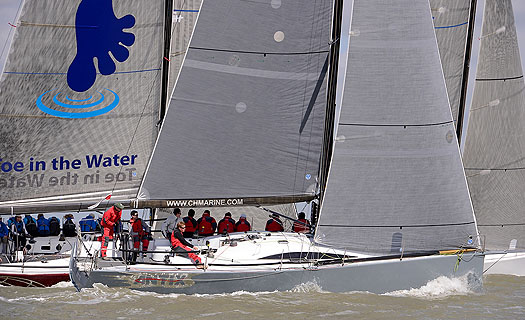
Doing the business. Anthony O'Leary's Ker 39 Antix settling into the groove on the way to the top place in the Easter IRC Championship. Photo: Rick Tomlinson
That in turn augured well for Ireland's Commodore's Cup chances, which then received a further boost last weekend when the crew of another Irish team wannabe, Quokka with Michael Boyd and Niall Dowling, had a winning weekend in the Warsash series with their temporary mount Tarka in anticipation of Quokka's return from the Caribbean at the end of May.

The Colours Match team racing between UCD and Trinity served up top sport in the Liffey, with Trinity winning. Photo: W M Nixon
Meanwhile the universities racing has been brought to life, for although UCD had a convincing win in the racing with the SailFleet J/80s to become the Irish team for the Student Yachting Worlds in France in the Autumn, before April was out the Colours Match in the Liffey under the burgee of the Royal Alfed YC, team-raced in Fireflies, saw Trinity take the honours in convincing style.
But if we're looking for something which really did set things freshly alight, it was out in Hyeres where the ISAF Championship saw the northern duo of Ryan Seaton & Matt McGovern take silver in the 49er, almost immediately moving them up the global rankings from 33 to 11, a quantum leap and no mistake.
The potential for serious success by these two has been fairly obvious for some time, but anyone who sails boats will know only too well how many factors have to come into alignment to get you up among the magic metals at the end of the day.

Stars of the silver sea – the Seaton/McGovern team took a silver medal for Ireland at Hyeres.
That their new global status was almost immediately acknowledged by this rankings improvement will in turn add heft to everything they do and say. Thus when, some time ago, the Ryan/Seaton equipe suggested that the 2016 Olympics sailing waters in Brazil are so off the standard as to be a health hazard, it attracted polite attention. But now that they're Number 11, and still counting down, much more notice is taken. And the fact that the Vice President of the International Olympic Committee has suggested, with something approaching despair, that the facilities in Brazil just aren't going to be ready for 2016 at any standard, all gives added legs to the statement from Ireland's 49er crew.
This in turn makes us wonder where world sailing might go in 2016 if the Brazilian setup is still Work in Progress. With tongue only slightly in cheek, we suggest they need look no further than West Cork, where Baltimore Sailing Club has been expanding its facilities to meet increased demand as a club which last year introduced something like 700 people to sailing. That BSC and current Mitsubishi Motors "Club of the Year" Kinsale YC further east along the West Cork coast have both been putting in premises up-grade during the past year, while other clubs have been having it tough, and just about hanging in there in some cases, surely gives pause for thought.
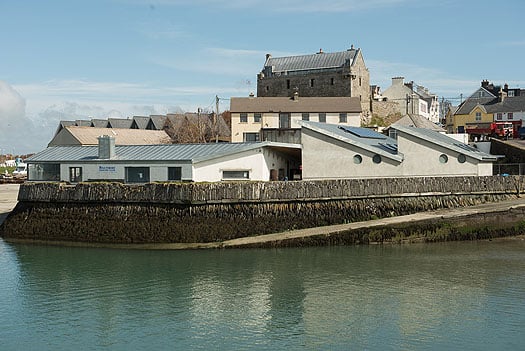
Olympic venue? The extended and up-graded Baltimore Sailing Club is ready and raring to go.
The economic shakeout of the past five years has caused a massive write-down in the value of almost all property and other assets. And in the case of yacht and sailing clubs, there has been a detailed examination of the continuing validity, or otherwise, of established yacht clubs and their traditional business model of quite high subscriptions under-writing other facilities which in turn combine to provide the complete package of an orthodox yacht club.
Inevitably, most clubs are run by officers and committee members who have been involved with the club for many years. Thus, like people who have been running a quality hotel for decades, they may have an inflated notion of what their organisation and its premises are actually worth. Admittedly there's only limited usefulness in comparing a yacht club with a hotel, but lessons can surely be learned. The fact is that hotels today are worth maybe only a third or even less of what they were reckoned to be worth six years ago. And equally, while yachts clubs certainly have a unique package to offer, is it unusual enough and special enough to charge high subscriptions when there are alternative facilities and services available?
The dilemma arises to some extent in all sailing centres. Last week we were discussing the story of the development of Howth YC. Today it is in the seemingly happy situation of having its own marina, thus it theoretically can offer an attractive all-in-one package to any potential member. But the very fact that Howth YC has done so much to help make Howth a colourful and vibrant sailing/fishing port is partly to its own disadvantage. The place has developed as a remarkable focus for top seafood restaurants. This means that the extensive club catering facilities – expected by traditional members - are constantly battling for business with a whole slew of award-winning eateries and characterful pubs nearby.
The problem is more acute in Dun Laoghaire in that the only club within the marina area is the Royal Irish YC. Thus while people may have been loyal members of the National, the Royal St George and the Dun Laoghaire Motor Yacht Club, they find that after going out in the boat, it's very easy to round out the evening aboard in the marina, chatting among themselves or with other crews on boats nearby, and then head straight for home without making their number in their home clubs at all.
This situation is less in evidence at weekends and during special events. But nevertheless it was causing such a lessening in mid-week club vitality that various steps have been taken, and the Royal St George's move to take over berths in a block booking in the outer marina, and service them by a frequent ferry direct from the clubhouse, is a visionary step.
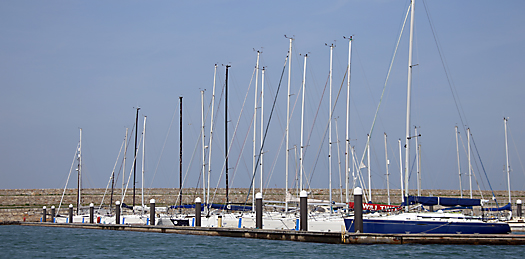
The Royal St George YC has introduced a direct ferry service from the clubhouse to its group of berths in the outer marina in Dun Laoghaire. Photo: David O'Brien
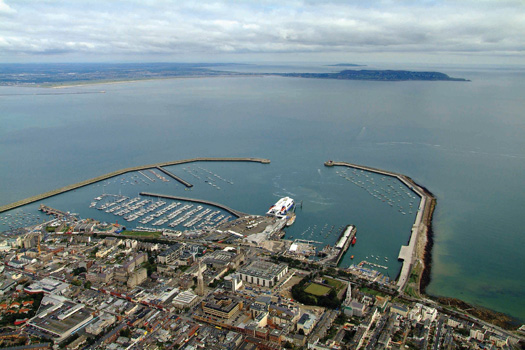
To overcome a lack of direct access to the Dun Laoghaire Marina, the Royal St George YC is running a ferry service from its clubhouse (to right of Stena Ferry, foreground) to the berths in the Outer Marina (upper left) Photo Kevin Dwyer/courtesy ICC.
Nevertheless, in all club administrations there are those who are of the opinion that, whatever the Honorary Treasurers may believe, there has to be a radical re-think of the primary subscription levels. In essence, they're suggesting that the book value of the club has to be written down such that subscriptions are halved. Personally, I haven't much of a notion of how to read a balance sheet, but the dogs in the street know that in the hospitality industry – which, in the broadest sense, is the area in which yacht and sailing clubs operate – values have been savagely slashed, and while charges may still seem high, at least the places are surviving as going concerns.
With continuing reduction in expenses across the board, one area in which there seems to be much work afoot is in the Irish Sailing Association, which in latter days had begun to seem like some hidden corner of the civil service, existing more for the benefit of staff than for the provision of services for sailors. It's amazing to learn that the ISA has sixteen fulltime staff, and a basic annual wages bill of something like €600,000. When you add in the expected benefits, it musty come in total to a very tidy yearly sum.
What on earth do they all do? While you'll invariably find the ISA logo in prominence at some top events, it has to be said that you're entirely unaware of the organisation's existence in any form at more everyday happenings, and it doesn't seem to be because they believe in doing good work by stealth. But with special study groups resulting from the major changes introduced in the ISA setup at the AGM in March, we can only hope that in time the Association will reflect the cost-cutting which has had to be introduced in the clubs, which provide the main part of the ISA's income.
While the administrative structures are rightfully being pared back in many areas of our sport, the coastal infrastructure, on which all forms of seagoing ultimately depend, continues to need maintenance and development. In this area, one very promising green shoot is the news that there are signs of movement in Dunmore East. A dredging programme is getting under way, and just this Tuesday, Minister for Marine Simon Coveney TD convened a meeting in the port to inaugurate a community approach to harbour development which, it is hoped, will help to invigorate the many places around Waterford Estuary, for which Dunmore East has the potential to be the true gateway harbour.

Dunmore East – can it fulfil its potential as the gateway leisure port for the Waterford Estuary? Photo Kevin Dwyer, courtesy ICC
In a more extreme marine environment, it has been confirmed that €6 million will be spent on improving the pier at Doolin in northwest Clare, the nearest mainland quay to the Aran Islands, which also caters for the tour boats cruising along the Cliffs of Moher. While the locals seem well pleased, I wouldn't get too excited about it. This is one very rugged part of the coast, and when you remember that it took €31 million to extend the pier at Kilronan in Inismor, the main Aran island, and another €14 million to build the little harbour at the north end of Inis Meain, the middle Aran island, then we can only hope that €6 million is going to achieve something more than a few boulders being shifted about in the roaring ocean at Doolin.

The pier at Doolin is decidedly minimalist, but it provides the shortest sea passage to the Aran Islands. Photo: W M Nixon
But then, in the west all things are possible, and along the ocean seaboard we're told that four thousand signs are being erected to guide people along the Wild Atlantic Way, the new tourism initiative using many smaller coastal roads. Quite so. Frankly, with signage at this level, it will be the Tame Atlantic Way by the time half of them are in place. I have to admit to being a complete curmudgeon in this. In many years of transitting Ireland's west coast by sea and land, one of our favourite areas while driving along the west coast has long been the coast south of Kilkee down to Loop Head, where the cliffs comfortably rival anything the vulgar Cliffs of Moher have to offer, and it is magnificently uncrowded. But not any more, if the Wild Atlantic Way movement has its way.
While I appreciate that visitor numbers have to be kept up and increased whenever and however, it has to be done in a way which appreciates that's what brings people to Ireland (rather than just to Dublin, which is a special case) is an unspoilt landscape. So, four thousand signs just for the one Atlantic Way? Ogden Nash had something to say about this:
"I think that I shall never see,
A billboard lovely as a tree.
But then, until the billboards fall,
I'll never see a tree at all".
Be that as it may, the final sign that suggests things are on the move again is a notice I spotted recently posted at a nearby club, though language pedants might wonder how a notice which manages to mangle so utterly the plural of "dinghy", even to adding a completely superfluous greengrocer's apostrophe, could be seen as encouraging in any way whatsoever.
Well, once you've overcome your opinions about the errors, the underlying message must be good news. More youngsters are evidently coming to sailing this year. And as for the spelling mistake, even that's an improvement. A year ago, the same notice board opened by referring to something called "a dingy", but this time round we have to get to the second line before finding that. And it all comes right for dinghies in the end.
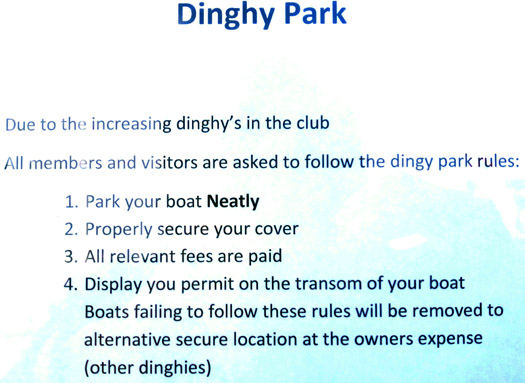
Sign of the times? Whatever about the spelling, this current notice at an Irish sailing club has an underlying message of good news. Photo: W M Nixon
Marine Notice: 2D Seismic Survey In Ireland's Atlantic Waters
#MarineNotice - The latest Marine Notice from the Department of Transport, Tourism and Sport (DTTAS) advises on proposals to complete the 2D seismic survey programme in the Atlantic waters of the Irish Designated Continental Shelf.
The planned start of the survey is mid-April 2014 and, weather permitting, will continue until mid-October 2014.
The programme will commence in the Porcupine Basin till early June and then progress to the Rockall Basin area.
The seismic acquisition will be carried out by the seismic vessel MV BGP Explorer (Call sign HP4919) and will be accompanied by guard/supply vessels MV Neptune 10 (Call sign ZDJQ8) and MV Neptune Mariner (Call sign ZDIW8).
The 2014 programme is proposed to complete the remaining 8,000km survey. The survey vessel BGP Explorer will tow a single solid 10km streamer and will travel at 4-5 knots with the streamer located approximately 10 metres below the water surface.
All vessels will be listening on VHF Channel 16 throughout the project.
All vessels, particularly those engaged in fishing, are requested to give the BGP Explorer, Neptune 10 and Neptune Mariner a wide berth and keep a sharp lookout in the relevant areas.
Details of the relevant survey area are included in Marine Notice No 28 of 2014, a PDF of which is available to read or download HERE.
Ireland's West Coast – Special Boats & Big Hearted Sailors
#historicboats – These days we're told of the growing disparity between the economic recovery of Ireland's eastern region, and the relative economic stagnation of some of the rest of the country. But W M Nixon suggests that, for one part of the western seaboard at least, there's a special vitality to life around boats which challenges this perception, and could usefully be emulated elsewhere. And he signs off with a thought-provoking conclusion.
Connemara, Conamara. Spell it as you wish, but The Land of the Sea on Connacht's most westerly coast fires the imagination and inspires the spirit. It's a place of the mind as much as a place of wild mountains where rocky inlets wind their way deep into rugged country. So while purists might define it exclusively as the much intertwined coastline with its myriad islands between Spiddal and Killary, many of the rest of us can be so inspired by that special Connemara quality that we reckon it runs all the way from Galway Bay to Achill. And anyone from that magic coastline, or indeed anyone who has been inspired by it, carries the spirit of Connemara with them wherever they may be.
The boat people you meet out there, each with their own unique and often ambitious maritime agenda, will send you on your way re-enthused about boats and places and their many possibilities. And when someone from another place or indeed another country decides that it's in Connemara their true self and fulfilment is to be found, far from being seen as exiles they are instead seen as a new focal points for their old groups, and their soul-mates from times past descend on them in Connemara for inspiration and mental re-birth.
This weekend, the boat men from Clondalkin in outer Dublin are journeying to Renvyle on the furthest far west coast to help one of their own in his boat restoration programme at a storm-battered corner on a bit of coast which was almost washed away in the winter's seemingly endless climatic violence.
The men of Clondalkin are the community group who built and sail and continue to lovingly maintain the large Galway Hooker Naomh Cronan. Recently, they've been busy enough with replacing some planks on their hefty big boat. But their key organiser Paul Keogh is mindful of the fact that one of their own, Paddy Murphy, is in the west, living on an Atlantic point out beyond the old Oliver St John Gogarty house which is now the hotel at Renvyle.
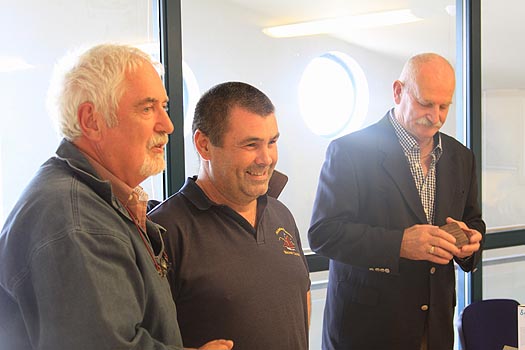
They dreamed the dream, and they made it happen. Key movers in the Naomh Cronan story were Stiophan O Laoire (left) and Paul Keogh, seen here at Poolbeg Y & BC as they come forward to accept a prize on behalf of the crew from Johnny Wedick, Hon. Sec. of the Dublin Bay OGA. Photo: Dave Owens
And between Paddy's house and the sea, beside a little hidden slipway which serves small boats which undertake the risky but rewarding challenge of harvesting Ireland's most fish-filled waters, the restoration project on the Aigh Vie is proving to be a demanding task. So this weekend the Keogh team – precise numbers unknown until everyone checks in this morning – are on site to re-caulk the Aigh Vie in a wild weekend of communal energy.
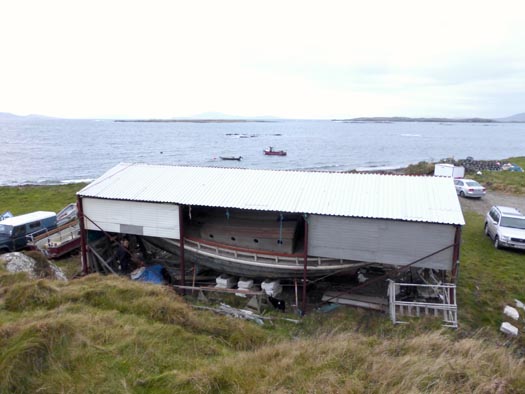
On the Atlantic frontier at Renvyle, the Aigh Vie is under her roof, tilted over to port to facilitate work under the starboard side of the hull. Photo: W M Nixon
For the Aigh Vie is one very special vessel. She's one of the Manx fishing nobbies which reached their ultimate state of development in the first twenty years of the 20th Century before steam power and then diesel engines took over. The nobby evolved to an almost yacht-like form through vessels like the 43ft White Heather (1904), which is owned and sailed under original-style standing lug rig by Mike Clark in the Isle of Man, and the 1910 Vervine Blossom, now based in Kinvara, which was restored by Mick Hunt of Howth, but he gave her a more easily-handled gaff ketch rig which looked very well indeed when she sailed in the Vigo to Dublin Tall Ships Race in 1998.
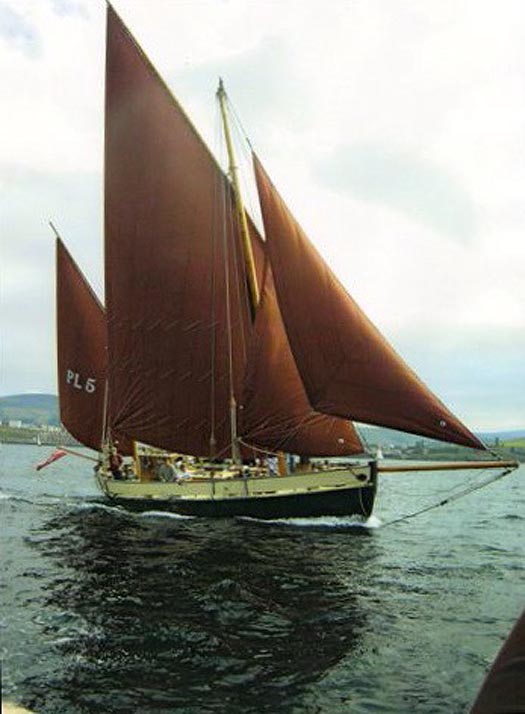
Mike Clark's Isle of Man-based 1904-built Manx nobby White Heather sets the original standing lug rig.
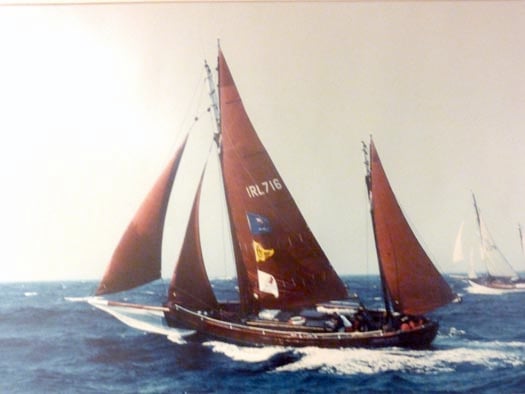
The 1910-built Manx nobby Vervine Blossom was restored by Mick Hunt in Howth, and is seen her making knots under her gaff ketch rig at the start of the 1998 Tall Ships Race from Vigo to Dublin. Photo: David Branigan
It takes quite something to outdo the provenance of these two fine vessels, but the story of Aigh Vie (it means a sort of mix of "good luck" and "fair winds" in Manx) is astonishing. It goes back to the sinking of the Lusitania by a German U Boat off the Cork coast in May 1915, when the first boat to mount a rescue was the Manx fishing ketch Wanderer from Peel, her crew of seven skippered by the 58-year-old William Ball.
They came upon a scene of developing carnage. Yet somehow, the little Wanderer managed to haul aboard and find space for 160 survivors, and provide them with succour and shelter as they made for port. In due course, as the enormity of the incident became clear, the achievement of the Wanderer's crew was to be recognised with a special medal presentation. And then William Ball, who had been an employee of the Wanderer's owner, received word that funds had been lodged with a lawyer in Peel on behalf of one of the American survivors he'd rescued. The money was to be used to underwrite the building of his own fishing boat, to be built in Peel to his personal specifications, and the result was his dreamship, the Aigh Vie, launched in 1916.
Over the years, the Aigh Vie became a much-loved feature of the Irish Sea fishing fleet. Tim Magennis, current President of the Dublin Bay Old Gaffers Association, well remembers her from his boyhood days in the fishing port of Ardglass on the County Down coast. In time, she was bought by the legendary Billy Smyth of Whiterock Boatyard in Strangford Lough, who gradually converted her to a Bermudan-rigged cruising ketch with a sheltering wheelhouse which enabled the Smyth family to make some notable cruises whatever the weather. His son Kenny Smyth, who now runs the boatyard with his brothers and is himself an ace helm in the local 29ft River Class, recalls that the seafaring Smyth family thought nothing of taking the Aigh Vie to the Orkneys at a time when the average Strangford Lough cruiser thought Tobermory the limit of reasonable ambitions.

Aigh Vie as she was when bought by Paddy Murphy from Billy Smyth of Strangford Lough.
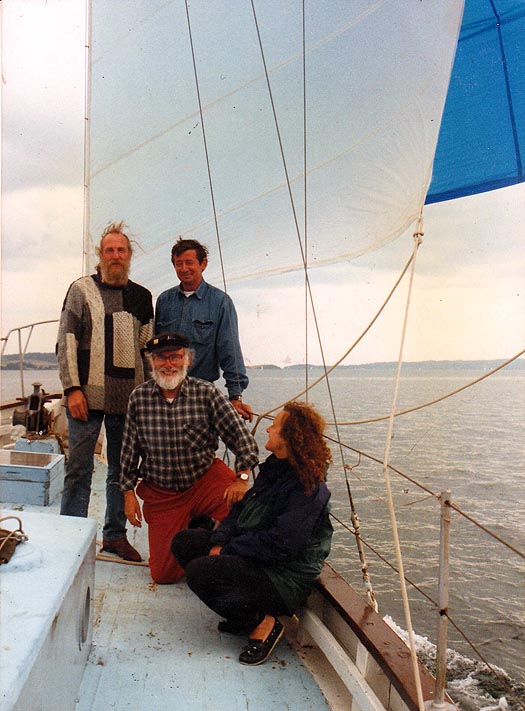
First sail with the newly-bought ship. Aboard Aig Vie heading for Dublin down Strangford Lough, the crew includes Paddy Murphy (left) and Tim Magennis (centre)
It's some years now since Paddy Murphy bought the Aigh Vie, and sailed her back to Dublin with his crew including Tim Magennis. But around the same time, Paddy was moving his base west to Renvyle, where he reckoned his skilled trade as a blacksmith, and his talents in traditional music and folklore, would provide him with a living in the area where he felt most at home.
As for the Aigh Vie, clearly she was reaching an age where work needed to be done. And he was minded to restore her to something more nearly approaching her original 1916 configuration. So somehow or other, he took the big boat west on a truck, managing to negotiate those little winding roads through Tully Cross and down to his place by the sea, where she went under a roof and work began.
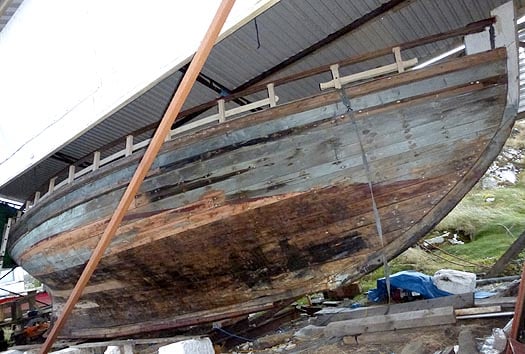
The hull of the 1916-built Aigh Vie as seen in Renvyle shows the remarkably yacht-like lines of the Manx nobby.........Photo: W M Nixon

.........in what was one of the last of the sailing type to be built before steam power took over. Photo: W M Nixon
It has been going on for some time now. The problem with being right on the frontier of Ireland's Atlantic weather is that no sooner do you start on some new area of timber repair and replacement, than the previous restoration section almost immediately starts to become weathered. Working largely on your own, you end up feeling you're going round in circles. So that's why the men from the Naomh Chronan are in Renvyle today to give the Aigh Vie project a mighty push forward.
For there's no doubt that while there's a lot done, there's a lot more still to do. But it does get done eventually if you keep the faith, and I was there back at the beginning of December to cheer Paddy along with all the usefulness of a hurler on the ditch. But at least I was accompanied by Dickie Gomes, who knows a thing or two about long-term boat restoration, as it took him 27 years to bring his 102-year-old Ainmara successfully back to life. But he did it so well that she won the Creek Inn Trophy for "Best in Show" at last summer's Peel Traditional Boat Weekend in the Isle of Man.

A bit of mutual support between two owners of vintage wooden boats – Paddy Murphy and Dickie Gomes in Aigh Vie's shed at Renvyle. Photo: W M Nixon
Nevertheless I've to confess that sometimes I wonder if wood is worth the trouble. Before getting to Renvyle, we'd called by with Jamie Young at Killary Adventure Centre for bit of a love-in with his alloy-built Frers 49 Killary Flyer which - as Brian Buchanan's Hesperia IV - was winner of the Round Ireland Race 1988 under the command of Dickie Gomes. Except that you won't see that fact in histories of the Round Ireland. Because for 1988's race, she sailed as the sponsored entry Woodchester Challenger, and thus was not entitled to the top prize, despite having the best corrected IOR time in the fleet.
But everyone in the know knows that Gomesie won, particularly the crew of Denis Doyle's slightly larger Frers sloop Moonduster. The two boats had been neck and neck running past the Blaskets, and suddenly Hesperia's spinnaker shredded. But Dickie had his crew so well drilled that one half of them had a replacement chute up and drawing before the other half had finished getting in the remains of the torn sail. The boat scarcely missed a beat in her rapid progress, and when the whole business was completed in about three minutes flat, there was a round of applause from Moonduster. You'd sportsmen doing the Round Ireland in those days.
As it happens, one of Hesperia's crew for that neat bit of work was Kenny Smyth, so it made it more than appropriate that we were going on to see the Aigh Vie on which he cut his offshore sailing teeth. But it was good to linger for a while at Jamie's snug place, and marvel at how he, with aid from the ingenious folk of the west, had contrived a slip and an angled trolley so that Killary Flyer can be hauled on site into a sheltered corner, for she's a big lump of a boat to be handling ashore.
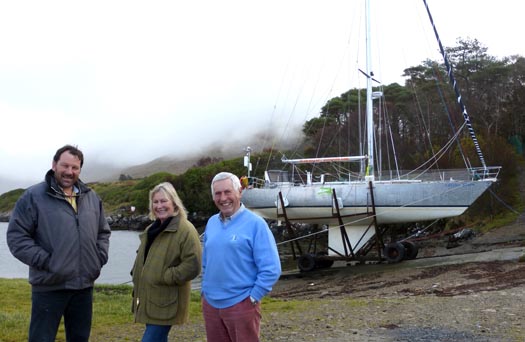
She's a big boat to be hauling on a slip in a remote corner of Mayo. Early December beside Killary Fjord, and Jamie Young of the Adventure Centre with Deirdre and Dickie Gomes and the Frers 49 Killary Flyer ashore for the winter. Deirdre was a fulltime member of the boat's crew when Dickie successfully skippered her offshore as Brian Buchanan's Hesperia IV. Photo: W M Nixon
It was some time in the New Year that we heard the shocking news. One of the most severe storms had twirled the Flyer up like a toy boat from her sheltered corner, and deposited this Frers masterpiece on her ear. Jammed in against the steep shore, she was trapped as the tide came in, and the hull was flooded with severe damage to the electrics and electronics.
But this is the west, where they're accustomed to overcoming massive challenges. The extraordinary Tom Moran of Clew Bay Boats played a key role in a salvage project which saw a temporary road being built so that a giant crane could be positioned for the delicate job of inching the big boat back upright. That done, she could then be moved to Tom's place at Westport for restoration to begin.
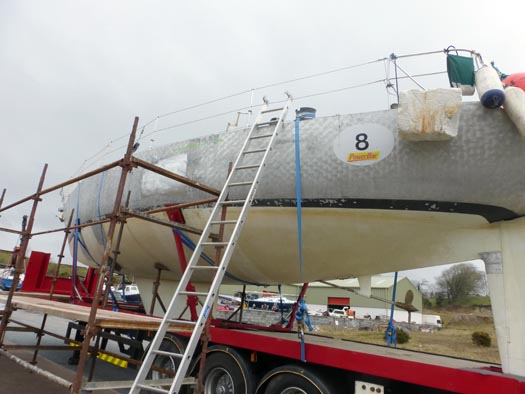
A couple of dents in aluminium? No problem. Following her brief episode of aviation, Killary Flyer's hull is already made good at Clew Bay Boats in Westport. Photo: W M Nixon
The whole business has been a marvellous advertisement for the effectiveness of hull construction using modern marine alloys. When aluminium was first created as the "Metal of the Future" two centuries ago, only the Emperor Napoleon could afford to have a cutlery set made in this exotic stuff. And though an early alloy boat put afloat in Lake Geneva performed reasonably well, as soon as a boat built with it was put into the salty sea, it just melted away.
But over the years the formulas have been adjusted to be corrosion proof in sea water, such that nowadays it's the ideal material for little boats which are going to have hard usage yet little maintenance, such as angling boats and the nippy craft used by rowing coaches.
And if you have a low-maintenance alloy hull yet give it a bit of cosmetic attention, it will look very well indeed, but it's not essential. As for the rough and tumble of life afloat, if you crash into a quay wall with a traditionally built wooden boat, she'll become shook from bow to stern – you never really know where the underlying structural damage ends, if at all. As for GRP and carbon or whatever, the damage will be more localised, but it still gets holed, and messily with it at that, while bulkheads may shift to an unknown degree
But a steel or aluminium hull will generally just be dented, and very locally at that. Repairs are manageable, even if it's skilled specialist work. So there's a lot in favour of steel and alloy. But steel rusts, and it never rusts quicker than in hidden pockets in the structure. But with remarkable advances in alloy welding and building techniques, the advantages of modern corrosion-free alloy construction become more evident every year for boats that are really going to be used, and not just seen as marina ornaments.
The Killary Flyer experience is ultimately a telling argument in favour of alloy construction. The hull was only dented in a couple of places where it was actually in direct contact with outcrops on the foreshore. Any dents have already been repaired by Tom Moran and his team, for they're able for anything to do with boats in any sort of material - I reckon if you wanted to build your dreamship out of resinated peat moss, then Tom would be game for the job.

Can-do people of the west – Mary and Tom Moran of Clew Bay Boats have successfully taken on many marine problems and projects. Photo: W M Nixon
Sorting out the interior systems is going to be more of a challenge, for Hesperia was originally Noryema X, built for Ron Amey in 1975. In a sense, there's a feeling of homecoming in the fact that she's being restored in Westport. If you head directly inland from that lovely little town, you're soon up in the mountains in the Joyce Country. And way back in 1975, the alloy hull of Noryema X was built by the renowned Joyce Brothers. Their fabrication workshop may have been in Southampton, but the family wasn't that long out of the mountains of far Mayo.
However, once the innovative Ron Amey had taken delivery of the hull of his latest Noryema from the brothers Joyce, he then took it to Moody's big shed at Bursledon on the Hamble for completion by the boatyard's craftsmen. I happened to be Bursledon-based in the early summer of 1975, and it really was all a wonder to behold.
Amey had installed a caravan in Moody's shed, and he lived in it while overseeing every detail of the new boat's fitout, while at the same time running his business empire of Amey Roadstone from a telephone in the caravan. It was said that the great man wouldn't be really happy with his new boats until the final jobs were completed just before the Fastnet Race in August, and after that he'd then start to think of the next one. But Noryema X was something special. She became the last of the racing line, and despite her enormous rig, Ron Amey then used her for eleven years of cruising in the Mediterranean which concluded with her sale to Brian Buchanan of Belfast Lough at Marseilles in 1986. She has been based on our island ever since, the source of much seagoing pleasure for hundreds of Irish sailors.
So bringing her back up to Amey standards is quite a challenge, as she's now part of Ireland's sailing heritage. But with Tom Moran they've someone who seems to have links with every maritime specialist in the country, and if he draws a blank in Ireland, his connections around the Solent marine industry seem pretty hot too.

Not quite where you'd expect to find an Arctic voyaging vessel, but Northabout seems at home in the Moylure Canal in the midst off Mayo fields. Photo: W M Nixon
Much encouraged by all this, for Clew Bay Boats is the sort of place where many good things seem possible, we then headed down to the Moylure Canal, a drainage waterway near Rosmoney at the head of Clew Bay where the great Jarlath Cunnane has created a tiny boat harbour and beside it a little place where, if so minded, he can build himself a boat.
Jarlath is the quintessential Connacht mariner, yet you'll never find him being sentimental about wooden boats. On the contrary, in the time I've known him he has built himself a steel van de Stadt 34ft sloop which he cruised very extensively, and more recently he took on the challenge of alloy construction to build the 44ft Northabout. Aboard this special boat, in teamwork with Paddy Barry, he has made cruises to remote and challenging places in voyages which, for most people, would have required full military logistical support.
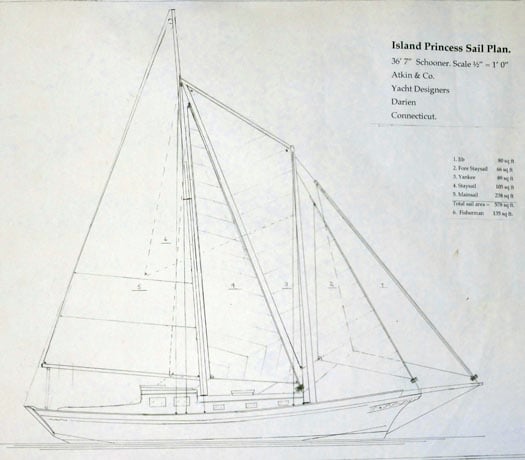
The new dreamship. Plans of the 37ft Atkins schooner which Jarlath Cunnane has been building over four years.
Knowing the scale of what he has done with her, it was bizarre to see Northabout sitting modestly in her berth in the little creek beside a Mayo field. But the presence of the long distance high latitude voyager was only part of the Moylure package. A few feet away in "the shed which isn't really a shed" was the new Cunnane boat, a sweet 37ft–Atkins schooner which, if you haven't yet appreciated the potential of good alloy boat construction, would surely win you over in a trice.

Good alloy construction, as seen here in the stemhead of the new schooner, can withstand comparison with any material. Photo: W M Nixon
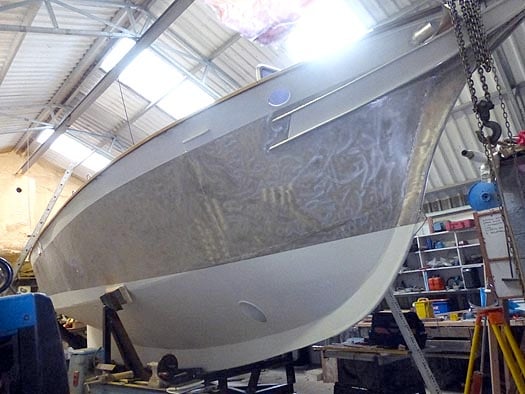
The new schooner has a workmanlike and handsome hull......Photo: W M Nixon

....which is aimed for comfort as much as speed, but she should be able to give a good account of herself in performance, and will be very comfortable for longterm periods on board. Photo: W M Nixon
Jarlath has taken four years on the construction, and when he gets to sailing the new boat, I'd say that the motto will be: "When God made time, he made a lot of it". This is a boat for leisurely cruising, a boat to enjoy simply being on board. In her finished state, she'll give little enough in the way of clues as to her basic construction material. Like Killary Flyer, and like Northabout too, she is in her own way a great advertisement for the potential of good alloy construction.
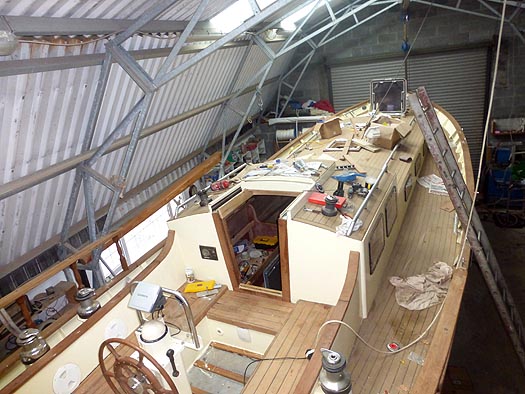
As completion nears, it becomes ever less apparent......Photo: W M Nixon
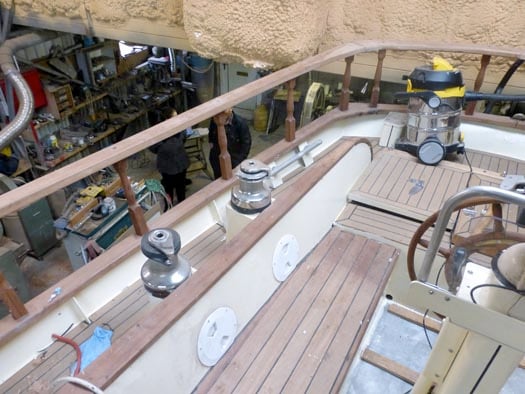
.....that the hull construction of the new schoner is in aluminium. Photo: W M Nixon
So we'll sign off this week with a special thought. As Irish life begins to move again, doubtless we'll soon hear increasing mutterings about the desirability of building a new Asgard sail training brigantine. Maybe we should keep the government out of it this time round, and build her through a voluntary trust organisation supported by public subscriptions and corporate donations. But however it's to be done, we should be starting to think about it.
And like many others, I've long thought that the ideal way forward would be with a steel hull built to Jack Tyrell's original Asgard II lines, which have a magnificently timeless quality to them. But I've changed my mind on that. Having seen what can be done with good alloy construction down in Mayo, and knowing the quality of alloy workboat construction being produced by firms like Mevagh Boatyard in Donegal and by the descendants of Jack Tyrrell among others at Arklow Marine Services in County Wicklow, it's difficult to escape the conclusion that the hull of the new ship should be built in aluminium.
It would be initially expensive, but it would confer great longterm maintenance advantages. And by going that way, we'd be able to provide all the double skins and safety bulkheads which will now be required without using up all available hull space, and without producing a boat so heavy she wouldn't be able to sail out of her own way. So let's hear it for an aluminium-hulled Asgard III.
#Surfing - Though the storm surges in Lahinch may be too much even for the most experience surfer to handle, big wave chasers will no doubt be champing at the bit to tackle the monsters expected to crash Europe's western shores in the coming days.
Surfing website MagicSeaweed describes the ominous swell due on Monday 6 January - appearing like a black hole on the weather map - as "a step into the unknown" as it comes as a single solid system rather than a chain of multiple cores, set to "deliver huge surf to the whole of west facing Europe and North Africa".
One of those who's surely itching to hit the surf at Mullaghmore Head in Co Sligo is photographer Christian McLeod, who tells the Irish Independent about the "huge thrill" he gets from capturing his breathtaking images from the heart of the action.
Elsewhere in Europe, Portugal is directly in the swell's path, and looks primed to provide some giant waves - possibly even to beat the record-breaking Nazare monster surfed by Irish-American waverider Garret McNamara two years ago.
Atlantic Marine Research Plan Now Online
#MarineScience - The EU FP7 SEAS-ERA Marine Research Plan for the European Atlantic Sea Basin - Towards a Strategic Research Agenda/Marine Research Plan for the European Atlantic Sea Basin - is now available to view and download online.
The report proposes a vision for each of eight priority research areas and three critical supports/infrastructures to progress the Blue Growth Strategy in the European Atlantic Sea Basin.
For each sector (such as marine renewable energy, fisheries/aquaculture, maritime transport, etc) key research prioritisation exercises are referenced and an indicative list of research priorities identified.
Geoffrey O’Sullivan of the Marine Institute, representing the SEAS-ERA Atlantic partnership, presented the SEAS-ERA Atlantic report at the Lisbon Atlantic Conference from 4-5 December organised by the Portuguese Government to report progress on the implementation of 2011's EU Strategy for the Atlantic and this year's Atlantic Action Plan.
In his presentation, O’Sullivan argued that the SEAS-ERA Atlantic Report represented a source of information on the sectoral research priorities to be addressed in an Atlantic Sea Basin context to support the Blue Growth Strategy.
He welcomed the opportunity afforded to the SEAS-ERA Atlantic partnership to contribute to the development of the Atlantic Action Plan (2014-2020) and acknowledged the support of the European Commission in including the SEAS-ERA Atlantic Discussion Document (2011) on the Atlantic Forum website as background information.
“The real success of the SEAS-ERA Atlantic partnership [was] the input and influence the project had on development of the Atlantic Action Plan, published by the commission in May 2013,” he said.
The EU FP7 SEAS-ERA partnership will host its third SEAS-ERA Strategic Forum in Brussels on 25 February 2014.
The project is a network of European marine research funding organisations (RFOs) consisting of 21 partners and two third-parties from 18 member and associated member states located along the European seaboard in the Atlantic, Mediterranean and Black Sea.
The Marine Institute is a partner and joint lead with the European Marine Board (Ostend, Belgium) of Work Package 6.1: A draft Marine Research Plan for the European Atlantic Sea Basin.
The principle aims of the SEAS-ERA network are to improve co-operation between national competitive marine research funding programmes; to facilitate better co-operation in addressing shared opportunities and challenges; to ensure better use of existing resources and capacities; to bridge identified gaps; to avoid duplication; to jointly fund strategic projects of mutual interest and, in doing so, contribute to the sustainable development of the marine resource and progress the establishment of the marine component of the European Research Area (ERA).
The plan comes online with news that some €200 million has been earmarked for marine research and innovation for the first two years of the EU's Horizon 2020 programme that commences in the New Year.



























